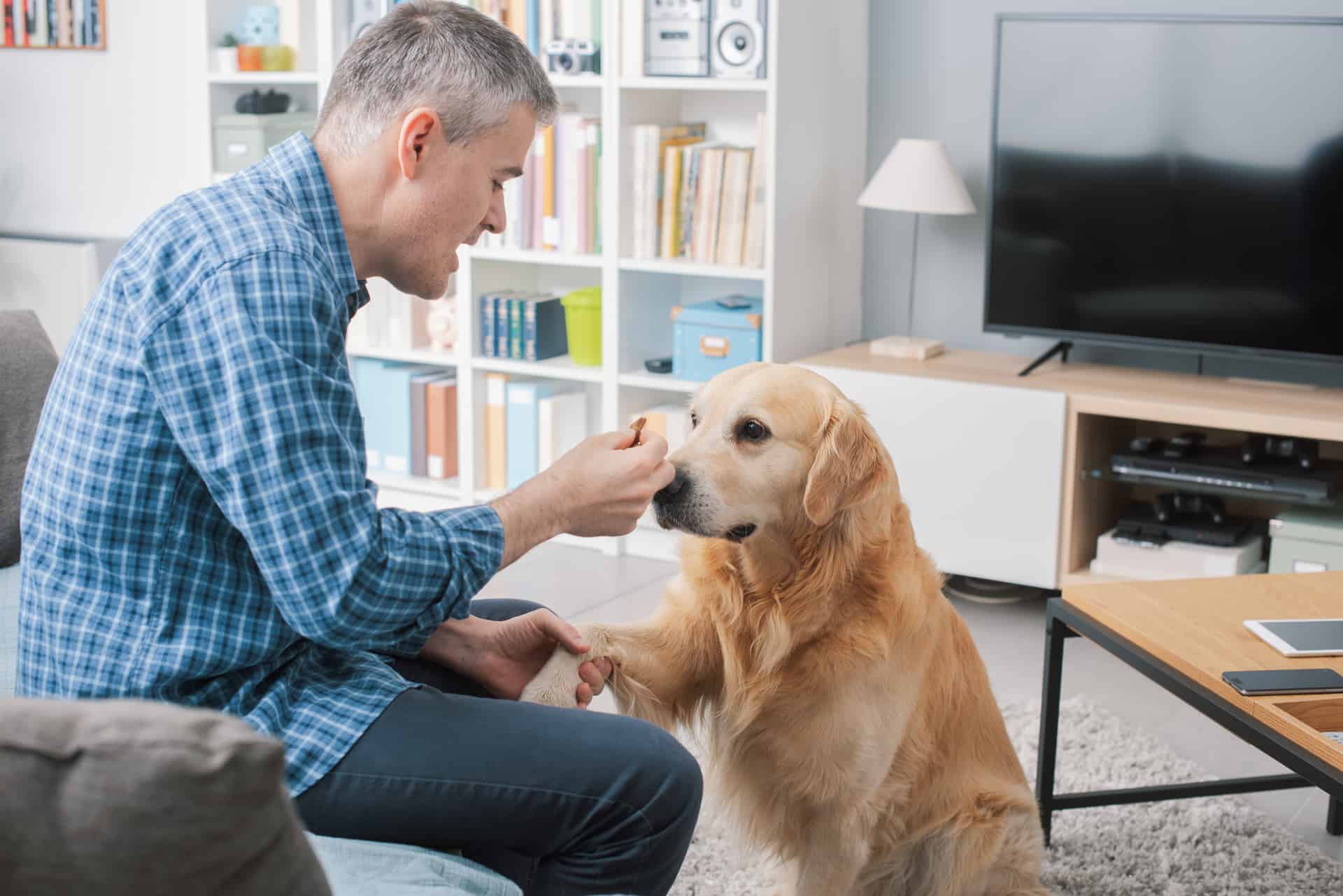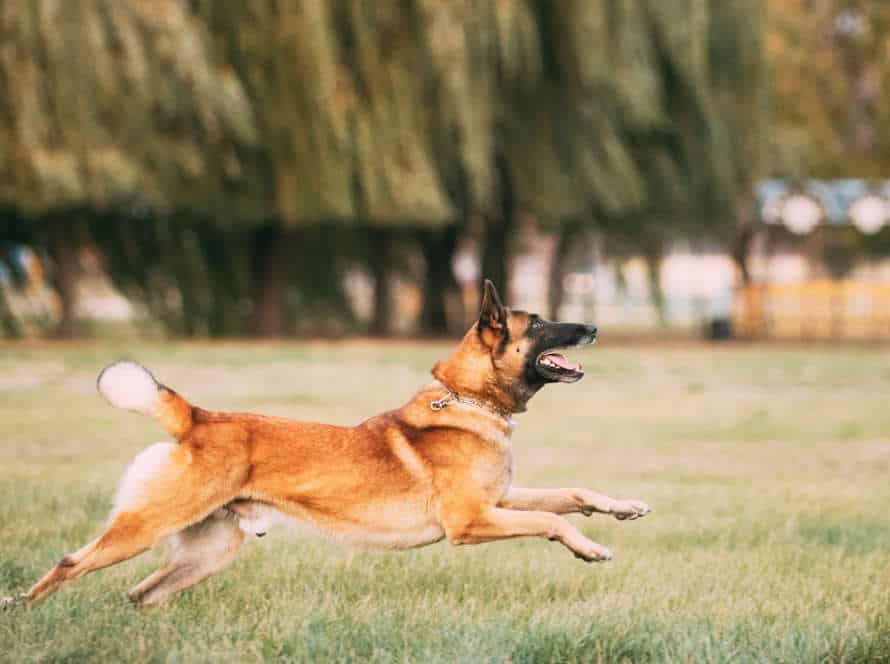How to Use Calming Dog Treats Effectively
Calming dog treats can help reduce anxiety and stress in your pup. But, it’s important to use them correctly to get the best results! Here are some tips:
- Read the instructions: Check the packaging for dosage and frequency. Follow them to make sure your dog gets the right amount.
- Use positive reinforcement: Praise or reward your pup for good behavior while they’re eating their treats. This will help reinforce the calming effect.
- Use during stressful times: Calming treats are designed for situations such as thunderstorms or fireworks. Don’t use them for normal occasions or they will lose their effectiveness.
- See your vet: If your dog’s anxiety is severe, talk to your vet first. They will help decide the best course of action.
Pro Tip: Combine calming treats with other techniques such as exercise, music therapy, or aromatherapy to help your pup relax.
Understanding Calming Dog Treats
Calming dog treats are a trendy way to assist your pup with their anxiety, fear, and other emotions. To use them correctly, we must comprehend them in full. So, let’s take a look at what calming dog treats are. Why are they used? And, how to make them successful?
What are calming dog treats?
Calming dog treats are made with natural ingredients to help pups relax and reduce anxiety. They work for dogs who get tense on car trips, vet visits, during thunderstorms, or due to separation anxiety. Treats often include chamomile, valerian root, passionflower, and melatonin which help create serotonin and dopamine in the brain. This encourages a relaxed mood.
For best results with calming dog treats:
- Read the label and ingredients before you buy
- Follow dosage instructions
- Use with behavior modification and training
- Be patient and consistent
Remember, calming dog treats are not meant to replace vet treatment or medication for serious anxiety. See a vet if you’re worried about your canine’s anxiety.
How do they work?
Calming dog treats are specially made with natural ingredients that help soothe anxious, stressed, or scared doggos. They work by getting the brain to produce happy neurotransmitters – serotonin and dopamine – which help relax your pup.
Top ingredients found in calming treats are: Chamomile, Passionflower, Valerian root, L-Tryptophan, and Melatonin. These target the dog’s nervous system to reduce stress and make them feel better.
Be sure to follow the dosage instructions on the package or ask your vet. Treats are best used as a tool to calm behavior, not a long-term solution. Help their effects by keeping Fido in a quiet environment.
Pro Tip: Talk to your vet before giving your pup new food or supplements.
Different types of calming dog treats available
Calming dog treats come in many shapes and flavors. They offer unique benefits to soothe your pup. Selecting the right treat and using it correctly can reduce anxiety, stress, and hyperactivity.
Types of calming treats:
- Hemp-based: Natural hemp extract and essential fatty acids that have calming and anti-inflammatory effects.
- L-tryptophan-based: Contains the amino acid L-tryptophan to boost serotonin levels and promote relaxation.
- Chamomile-based: Chamomile is known to calm the nervous system, reducing anxiety and aiding sleep.
- Valerian root-based: A natural sedative to reduce anxiety and promote relaxation.
When using calming treats, follow the dosage and give them at least 30 minutes before a stressful event. Pro tip: Always speak with a vet before adding new treats or supplements to your dog’s diet.
Identifying When Your Dog Needs Calming Treats
Calming treats: a perfect way to help your pup relax! Before you give them one, identify why and when your dog needs them. This’ll help you use them safely and correctly. In this article, we’ll explain how to recognize when your pup needs calming treats!
Recognizing stress, anxiety, and fear in dogs
Recognize signs! Have a look for stress, anxiety, and fear in dogs. Common signs? Excessive panting, pacing, avoidance or hiding, destructive behavior, and constant licking or chewing. Fear? Trembling, whining or barking, growling, and cowering.
Calming dog treats? A good short-term solution. Address the cause? A long-term solution. Before using calming treats? Best to consult a vet. Important to follow instructions. Monitor your dog’s response? Use them most effectively.
Identifying situations when your dog may need calming treats
Calming treats for dogs are made to soothe anxiety and pressure in pooches exposed to certain moments. Deciding when your pup needs calming treats can help you use them properly to encourage your dog’s overall well-being.
Here are some scenarios where your pup might benefit from calming treats:
- Fireworks or thunderstorms can spark angst in many dogs.
- Being left alone for a long time can cause separation stress.
- Moving in cars or planes can be tense for canines.
- Meeting new people or other animals can cause fear and anxiety in some dogs.
- Anxiety related to age.
By recognizing these situations, you can give your pup calming treats before, during, or after a stressful event, as prescribed by your vet. It’s imperative to use calming treats as instructed and not substitute them for necessary behavioural training.
Consulting with a vet before administering calming treats
Calming treats can help with a pup’s stress and anxiety, but always check with the vet first. Signs that treats may help include too much barking, damaging things, panting, shaking, and pacing. Here’s how to use them right:
- Ask your vet if calming treats are a good idea for your dog. Discuss the correct amount and how often to give it.
- Read the label carefully.
- Give the treats before a stressful event, like a thunderstorm or a vet visit.
- Watch your dog to see if treats help and adjust the dosage and frequency as needed.
Note: Calming treats are not an alternative to training or medicines – they should be used as part of a whole plan of treating your pet’s stress or anxiety.
Administering Calming Dog Treats
Calming dog treats can reduce stress in your pup. If anxious, treat-giving can help your pup feel safe. But how to give them correctly? Here are tips for using calming treats effectively:
- Administer them
- Know when and how
- Provide a sense of safety
- Reduce stress and anxiety
Selecting the right calming dog treat for your dog
Picking the perfect calming dog treat can be tricky. With many options, it’s hard to choose which one your pup needs. Here are tips to help:
- Figure out why your doggo is anxious or stressed.
- Look for calming treats with natural ingredients like chamomile, valerian root, and passionflower. These are known to soothe dogs.
- Talk to your vet to get the right dosage for your pup’s size and weight.
- Pick a treat form that’s easy to eat, like soft chews or biscuits.
- When giving the treat, follow instructions and watch for any reactions.
- Give exercise and mental activities to reduce stress.
- Pro tip: always check with your vet before giving a new treat.
Determining the correct dosage of calming dog treats for your dog
It’s crucial to get the right dosage of calming dog treats for your pup. Consider their weight, age, and health condition. Generally, the dosage should be based on the amount per pound of their weight, as stated on the package.
Make sure to give them a peaceful, comfortable environment to relax. Monitor how they react after giving them the treat too – watch out for any side effects or allergies.
Pro tip: Talk to your vet about the correct dosage for your pet’s needs.
Administration methods for calming dog treats
When it comes to calming dogs, there are several methods. A popular one is giving treats directly, either by hand or in a bowl. Make sure to follow dosage instructions and monitor your dog’s reaction.
Another option is crumbling the treats over their food. This helps picky dogs or those who don’t like the taste. Mix with wet food or add to dry kibble with water to make a gravy.
For highly anxious or stressed dogs, consider using a treat-dispensing toy. It gives a rewarding distraction, and prolongs the treat’s effectiveness.
Supervise your dog when eating the treat and store them safely away from children and pets.
Training and Positive Reinforcement Techniques for Dogs
Working with dogs can be great! One way to do this is with calming treats. These should never replace proper training and positive reinforcement. Here is how to use them effectively, and how they fit into positive reinforcement training.
Positive reinforcement and its effectiveness
Positive reinforcement is a popular training approach that has many advantages for both pups and their owners. Using it can help dogs learn and remember commands more easily, act better, and have stronger relationships with their owners.
Here’s how:
- Reward your pup – with praise, a pat, or a treat.
- Be consistent when they obey a command – give them a reward every time.
- Use a clicker to signal when they do something right – followed by a treat.
- Stay away from punishment – it can make dogs scared and anxious.
- Calming treats are best used after a stressful event – like a vet visit or fireworks. Pro Tip – Consistency is vital for positive reinforcement. Set clear expectations, and always reward good behavior – your pup will be happier and your bond will be stronger.
Training to reduce stress and anxiety in dogs
Dogs, like us, suffer from stress and anxiety. Training can combat these symptoms. Positive reinforcement techniques are especially useful.
Here are some to reduce stress and anxiety in dogs:
- Give rewards for good behaviour and ignore bad behaviour. Treats, toys, and praise should be given immediately.
- Create a peaceful environment. Provide comfortable bedding and toys. Reduce noises both inside and outside the house.
- Use calming techniques such as deep breathing or mindfulness with your dog.
- Feed calming treats containing melatonin, chamomile, or L-theanine.
Be patient and consistent with your training! Give your dog time to adjust.
Pairing training with calming dog treats
Training your pup with positive reinforcement techniques can be tough. But, use calming dog treats to make the process simpler and more fun. These treats have natural ingredients like chamomile, valerian root, and melatonin. These help dogs stay relaxed and focused while learning.
Follow these tips to use calming treats effectively:
- Don’t overuse the treats. Only give them when the pup performs the desired behavior.
- Get treats that are small and can be eaten quickly.
- Choose treats that are soft and chewy.
By combining training with calming dog treats, you can create a stress-free learning environment for your pup. This strengthens the bond and improves their behavior.
Additional Tips for Managing Dog Anxiety
Calming dog treats may be useful for reducing stress and anxiety in pooches. They can give fast relief from anxious scenarios and aid in long-term conduct issues. However, there are some things to remember when using calming dog treats.
We’ll look at them now and see how they can help you manage your pup’s anxiety.
Regular exercise and playtime to reduce anxiety
Exercise and playtime are great for reducing anxiety in your pet. Plus, when you add calming dog treats, you get even better results! Here’s how to use them well:
- Pick treats with natural ingredients, such as CBD, chamomile, and valerian root.
- Check the label or ask your vet for the recommended dosage.
- Combine treats with exercise and playtime.
- For acute anxiety, like during storms, give a treat about 30 minutes before.
- Be patient and consistent. Monitor your pet for any bad reactions.
- Remember, calming treats are not a replacement for vet care, but can be useful.
Creating a peaceful and structured environment for your dog
Creating a peaceful & structured atmosphere for your pup is vital for managing anxiety. Calm Dog Treats can be a helpful tool to relax them, but you must use them correctly to get results. Here’s how:
- Start with the right dose. Follow instructions on the packaging to know how much to give your pup, based on their size & weight.
- Time it right. Give the treat 30 minutes before a stressful event, like vet visit or thunderstorm.
- Be consistent. Use the calming treats regularly to encourage good behavior & reduce anxiety over time.
- Pair with positive reinforcement. Use the treats alongside praise & affection, so pup associates the treat with feeling relaxed.
- Consult vet before giving any new supplements to pup.
Pro Tip: Structure daily routine with exercise, play, & quality time with pup to reduce anxiety and create a tranquil environment.
Consideration of medication alongside calming dog treats if necessary
Calming dog treats can be a useful tool to help manage anxiety. But, severe anxiety may require medication. So, choose high-quality treats with natural ingredients and calming supplements. Like melatonin and CBD oil. Don’t use the treats as a replacement for behavior training.
Follow the recommended serving size to avoid digestive issues. If anxiety persists or worsens, talk to your vet about other treatment options. Like medication or therapy. Always monitor your dog’s behavior and health. To make sure they stay in good shape.
Frequently Asked Questions
Q: What are calming dog treats?
A: Calming dog treats are special treats that are designed to help relax dogs who are anxious, stressed, or hyperactive. They contain natural ingredients that can help to soothe your dog’s nerves and reduce anxiety levels.
Q: How do calming dog treats work?
A: Calming dog treats work by using natural ingredients that can help to reduce anxiety levels in dogs. These ingredients may include herbs like chamomile or valerian root, as well as supplements like L-Theanine or melatonin. When your dog eats these treats, the ingredients will begin to work to help calm their nerves and reduce anxious behavior.
Q: Are calming dog treats safe?
A: Yes, calming dog treats are generally safe for dogs to eat. However, it’s always a good idea to check the ingredients list before giving your dog any kind of treat to make sure that they aren’t allergic to any of the ingredients. Additionally, you should always stick to the recommended serving size for your dog’s weight to avoid overfeeding.
Q: How often can I give my dog calming treats?
A: The recommended frequency of calming treat consumption will depend on the specific instructions given by the manufacturer. Generally though, most calming dog treats can be given up to twice a day or as needed based on your dog’s behavior and anxiety levels.
Q: Can calming dog treats be used for all breeds?
A: Yes, calming dog treats can be used for all breeds. However, it’s important to note that some breeds may be more prone to anxiety or hyperactivity than others, so you may find that certain breeds benefit more from calming treats than others.
Q: Can I use calming dog treats as a substitute for medication?
A: While calming dog treats can be beneficial for reducing anxiety and stress, they should not be used as a substitute for medication prescribed by a veterinarian. If your dog is experiencing severe anxiety, it’s important to consult with your veterinarian to determine the best course of treatment.







